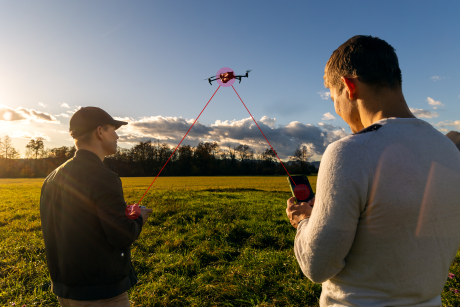
From 1 January 2024, all drones operating in the specific category and all drones with class marks operating in the open category will be required to operate with an active and up-to-date remote identification system
Advancing drone identification technologies
This involves equipping drones with technologies that allow authorities, as well as any member of the public, to identify drones remotely in the air and on the ground, using a smartphone app. This could include transmitting identification information such as the drone’s serial number, operator registration number, remote pilot position or, if not available, take-off point, and drone’s location.
Safe and secure skies
Security is the main reason why remote identification is required: to identify when a drone is used illegally, posing risks to safety, security and privacy. This will greatly enhance the acceptance of drones by the communities.
Which drones are equipped with remote identification
Drones with class identification label C1, C2, C3, C5 and C6 are already equipped with a remote identification system. The Open Category page explains classifications further. Also, all drones operated in the specific category will be required to be equipped with remote identification system. The drone operator may purchase a remote identification module to be attached to the drone. There are already remote identification modules available on the market. You can find the list on the Specific Category page.
Upgrading drones for safety and compliance
The drone operator is required to upload onto the remote identification system the UAS operator registration number received during the registration process. In case the operator owns multiple drones, the same UAS operator registration number must be uploaded onto all drones. After 1 January 2024, only drones equipped with a remote identification system, updated with the UAS operator registration number, will be allowed to operate. States may identify geographical zones where the remote identification is not mandatory.
Public access to information
All citizens may detect the remote identification information through a dedicated smartphone app. However, only the enforcement authorities will be able to interrogate the database and associate the UAS operator registration number with a name.
Want to know more?
To get the most up-to-date information on remote identification of drones in Europe, check the official websites of the national aviation authorities or relevant competent entities.
More info on the Civil Drones page.